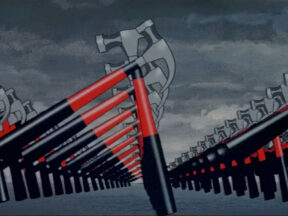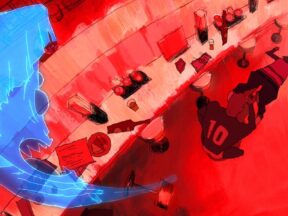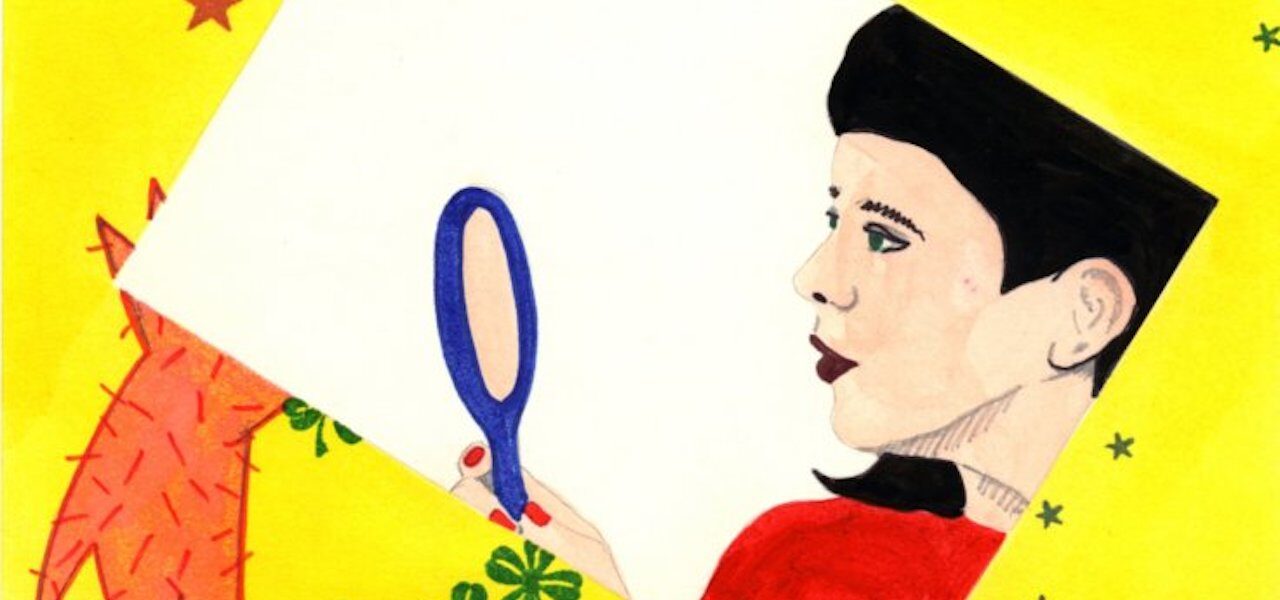
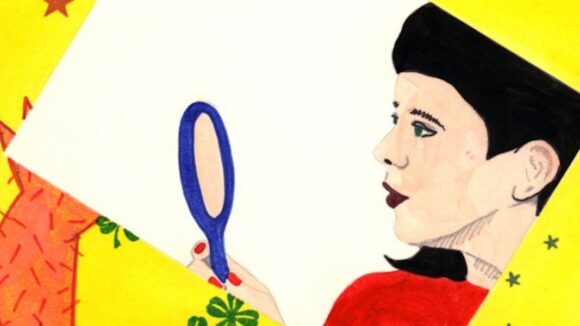
The Animation That Changed Me: Maureen Furniss on ‘Voices’
Maureen Furniss joins us for this week’s The Animation That Changed Me, a series in which leading artists and industry figures discuss one work of animation that deeply influenced them.
One of the world’s foremost animation scholars, Furniss has authored many books on the medium, including The Animation Bible, Art in Motion: Animation Aesthetics, and A New History of Animation. She is the founding editor of Animation Journal, a founding member and past chairman of the board of the Society for Animation Studies, and co-director of the Experimental Animation program at Calarts.
Furniss’s choice is Voices, one of the shorts Joanna Priestley made as part of her MFA in Experimental Animation at Calarts. The film revolves around a rotoscoped rendition of Priestley’s head, through which the director speaks about a range of subjects that occupy her mind. Below, Furniss tells us why she selected this film:
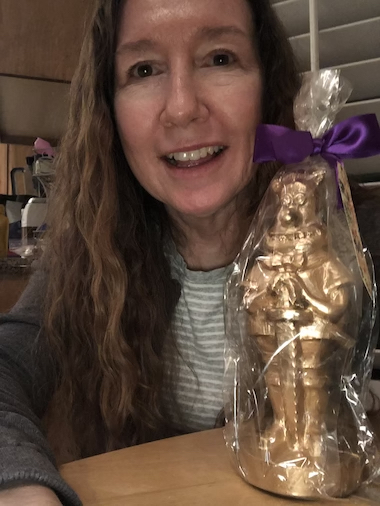
Maureen Furniss: I first saw Voices around 1985, when it was first released. I had won tickets to one of the early Spike and Mike shows [a.k.a. Spike and Mike’s Festival of Animation] at La Jolla Museum of Contemporary Art, San Diego. It was a film by a woman, featuring a woman (her rotoscoped image) who was talking about very un-cartoony topics. I’d never seen anything like it.
I went to the screening just because I won tickets from a radio station. This was long before the Comic-Con was a big deal in San Diego; you could walk in and out of the doors without reservations and long lines. The Simpsons hadn’t appeared. Cable was just getting going. Liquid TV was still a few years away. I was in grad school at San Diego State University (SDSU), in a live-action program, very industry-oriented and notoriously male-oriented.
I generally credit Voices with launching my career. I knew nothing about independent animation, but I thought, “I could do that.” I was very naive.
At the time I liked to draw, but SDSU didn’t have an animation course. Nonetheless, as an undergrad I drew a cel animation based on a children’s book, Blow a Kiss, Harry. It was about a naughty kitten who won’t blow a kiss to the reader. Of course I didn’t get permission to use it, and none of my teachers counseled me otherwise. It didn’t really matter. I finished the film, but it wasn’t festival material. I had done it for fun, as an independent study.
A little-known fact is that I won “best film” in the program one year after I made a film called Dancing Shoes Blues. It featured all my friends in a dream sequence that occurs when one of them falls asleep. I set it up so they would all come springing out of the closet and her party shoes were animated to tempt her to start dancing. I somehow lost the film, which was probably shot on Super 8, or maybe 16 mm. I also had done a dance film very much in the style of Norman McLaren’s Pas de deux, painting directly on 16 mm film of two dancers. It must have been a good film because the two dancers fell in love.
When I picked my thesis topic, I decided to research the distribution of independent films. However, there were almost no books in the library — just Of Mice and Magic [by Leonard Maltin] and Experimental Animation [by Robert Russett and Cecile Starr]. So I decided to do a study with the lofty title “The Current State and Future of American Independent Animation.”
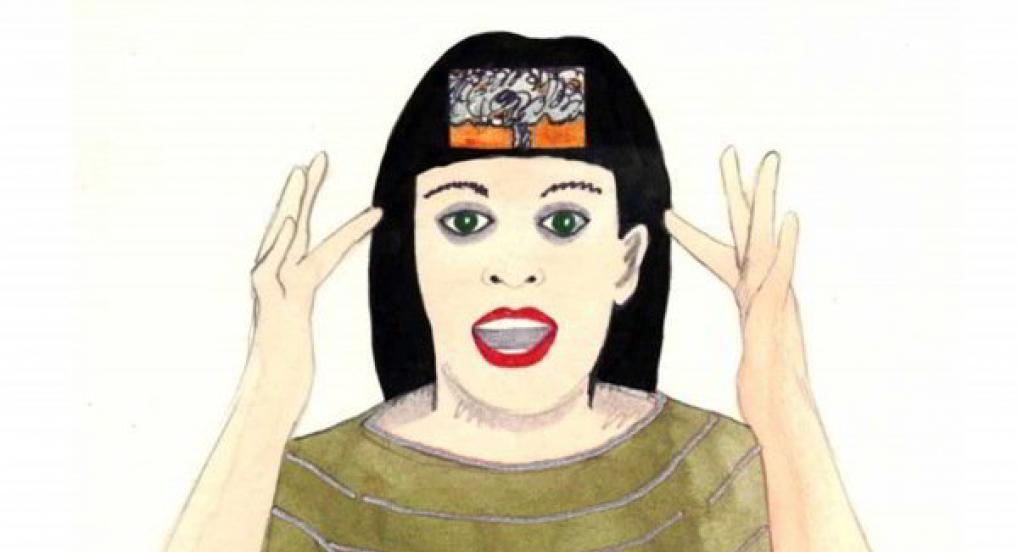
I sent out questionnaires to a list of people I found in a book called Frames. The questions were outrageously academic, but about thirty people responded. I’m friends with most of them now. The main thing I learned is that I’d better start teaching. So I went to University of Southern California and got my PhD, struggling to study animation in a live-action-oriented program.
I’m pretty sure I’ve included Voices in at least one of my books, but I haven’t analyzed it in the sense of deconstructing it. In retrospect, I can now see how it fit into a bigger system of development in the animation world. I now teach at Calarts, where the film was made, and I got to know Jules Engel, who was Joanna Priestley’s mentor. At Calarts we now have a thriving experimental animation program attended mostly by women, at least at the MFA level.
At the time, I think rotoscoping had been seen as a novel approach to animating, whereas now it’s probably not seen as experimental to the same extent. In 1985, A-ha’s “Take on Me” music video was released. The rotoscoping in that film got a lot of attention. Michael Patterson, the film’s director, had been a graduate student at Calarts as well, and his rotoscoped thesis film Commuter was finished in 1981.
I rewatch Voices from time to time. It was a graduation film, so I guess now I view it more as a teacher watching a great student work. I’ve also met Joanna. I have a lot of contextual information now that I didn’t have [when I first saw it]. Nonetheless, it’s still important to me, as it introduced me to my future occupation and professional world. It opened the door for me.

.png)
